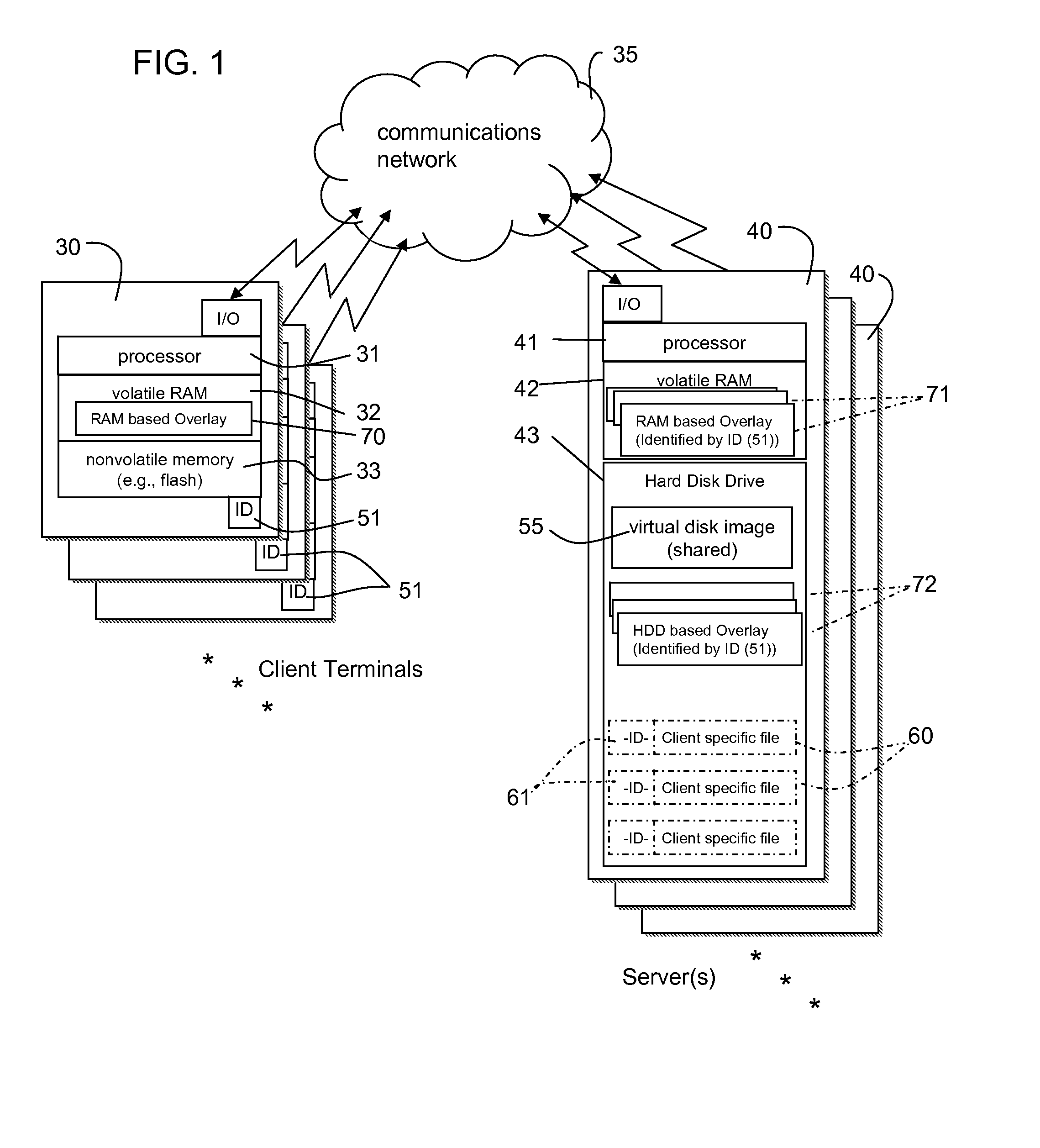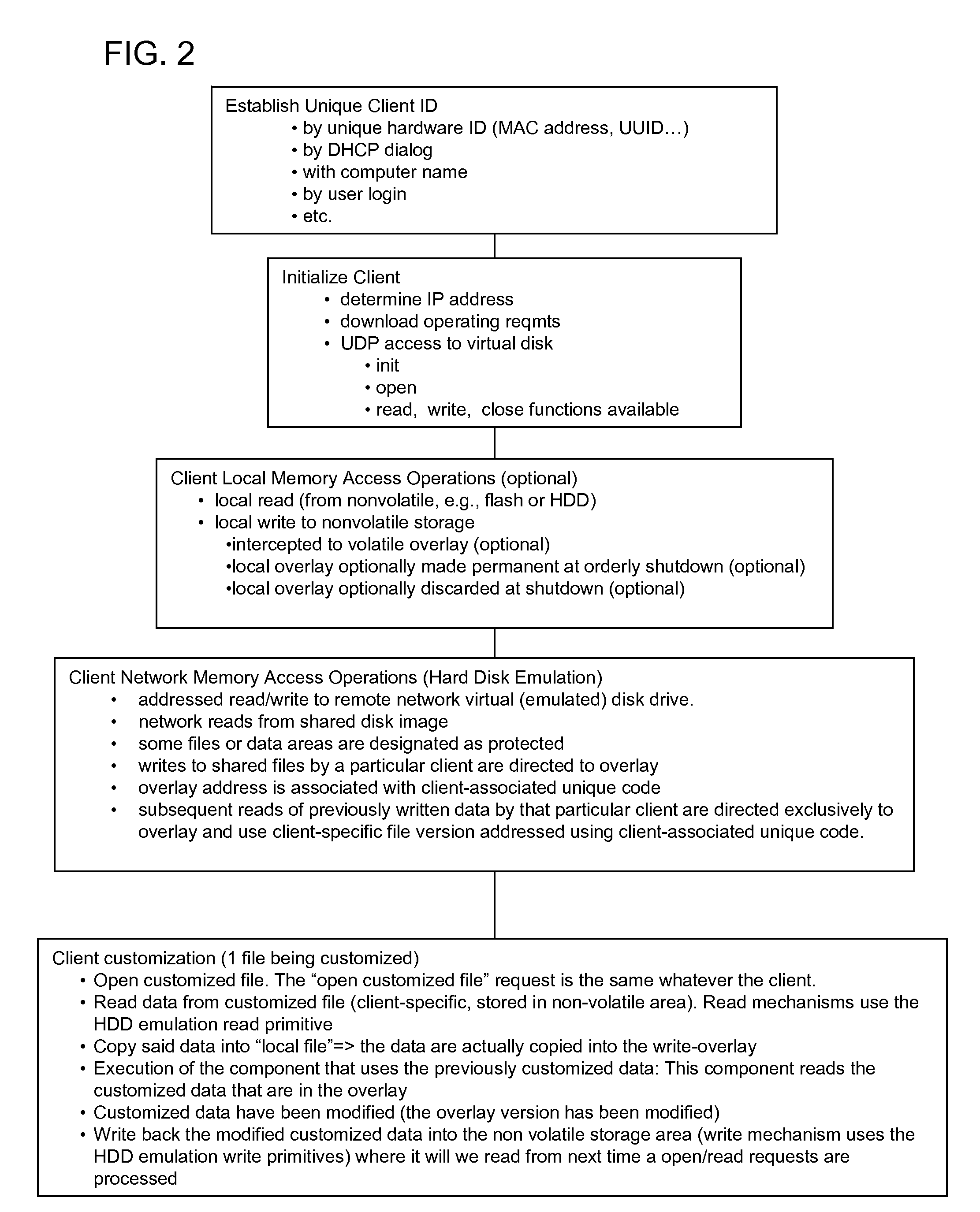Maintaining commonly named client-specific file content in hard disk drive emulation
a client-specific file and hard disk drive technology, applied in the field of common-name client-specific file content in hard disk drive emulation, can solve the problems of inability to distinguish between written data files, inconvenient or slow writing, and inability to change stored values, so as to achieve substantial versatility, effectively customize a virtual hard drive, and substantial efficiency
- Summary
- Abstract
- Description
- Claims
- Application Information
AI Technical Summary
Benefits of technology
Problems solved by technology
Method used
Image
Examples
Embodiment Construction
[0069]FIG. 1 schematically illustrates an embodiment of the invention applied to a network hard disk emulation embodiment. The invention is applicable to a local hard disk emulation as well, generally shown in FIG. 3, or to a local overlay arrangement, shown in FIGS. 4 and 5
[0070] With reference to the network embodiment in FIG. 1, a plurality of terminals 30 are provided at various locations, in data communication with a network 35, shown generally, to which one or more servers 40 is coupled. The terminals 30 and the servers 40 are operational entities that communicate in a standard manner over the network using communications protocols, and in that sense are peers. Functionally, however, the terminals are users of data storage capacity at least via one of the servers 40, which provides access to the client terminals to certain groupings of data on one or more hard drives 42 accessible via the servers 40 using a hard disk drive (HDD) emulation technique.
[0071] The network arrangem...
PUM
 Login to View More
Login to View More Abstract
Description
Claims
Application Information
 Login to View More
Login to View More - R&D
- Intellectual Property
- Life Sciences
- Materials
- Tech Scout
- Unparalleled Data Quality
- Higher Quality Content
- 60% Fewer Hallucinations
Browse by: Latest US Patents, China's latest patents, Technical Efficacy Thesaurus, Application Domain, Technology Topic, Popular Technical Reports.
© 2025 PatSnap. All rights reserved.Legal|Privacy policy|Modern Slavery Act Transparency Statement|Sitemap|About US| Contact US: help@patsnap.com



